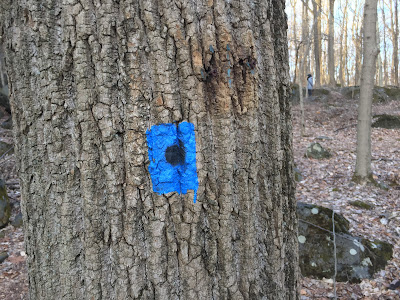Herein, Princeton Nature Notes travels down the long sweep of the piedmont to Durham, North Carolina, to visit past discoveries and persistent miracles.
The evolution of a plant lover can lead in unexpected directions. In my case, my fascination with plants first evolved from vegetables (loved for their utility and productivity) to roadside weeds (loved for their beauty amidst neglect, blooming unnoticed as the world speeds by). When we bought a little house with a beautiful backyard garden, my love shifted to perennial borders, with their showy poppies, irises, and delphiniums. But beauty for beauty's sake lost its meaning after awhile. My love shifted to native plants that had evolved within a community of plants, all deeply connected and intertwined back through time. Some of these could be showy, like a forest glade full of trillium and dogwoods. But this love extended to other congregations of native plants whose beauty was not in overt display but in their diversity and uniqueness. Some of these remarkable congregations--I discovered a few while living in Durham--were so subtle as to appear barren from a distance.
This field, long ago preserved in the Ellerbe Creek headwaters to commemorate the largest surrender of the Civil War that took place here, looks empty and a bit threadbare. The stump, though, is of a shortleaf pine whose rings numbered 150--a surprising age for a smallish looking tree. But what possibly could have made this a favorite place for great Duke University botanists like Blomquist to botanize, nearly a century ago?Surprisingly, the field's uniqueness and rich diversity has survived through the centuries because its soil is so poor. Not poor in the sense of having been exhausted through extractive farming. This soil is unfarmable by nature, a sort of soil classified as "Helena" or "Appling", like concrete when dry, yet also somehow sustaining of sphagnum mosses and plants like the sundew that would normally be found in bogs. Perhaps a few farm animals once grazed there, but frustrated farmers looked elsewhere for better land to tear up with their plows, and so this field and its special flora remained undisturbed.
The poor soil has also discouraged the more aggressive plant species, allowing more fragile-looking plants to survive. These are what I call the "plants of peace", the modest flowers that likely bloomed at the feet of the generals and their soldiers 156 years ago, during those momentous days of negotiation in April, 1865.
This one, dwarfed by my fingers, looks like a miniature bluet.
And next to this field of miniature flowers
Holding their own, for now, among younger trees are the "old guard" of craggy shortleaf pines and post oaks that once comprised a more savanna-like open forest, their thick bark adapted to survive the ground-level fires that would sweep through, sparked by passing trains.
Large expanses of low-bush blueberries, another species stimulated by periodic fire, are more evidence of this past, more open landscape. The fires no longer sweep through, and the decay-resistant needles and oak leaves lay thick on the forest floor, smothering what likely had been a diverse growth of wildflowers. Who knows what long-slumbering seeds might sprout if a prescribed burn was done here.























































